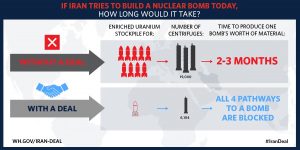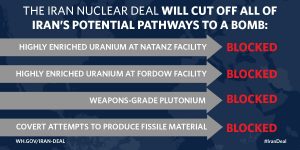In an attempt to revive the nuclear deal that was designed to add a feather to Iran’s cap has now entered a phase where the world leaders seem to see glimmers of hope, considering their own national interest. The Iran nuclear deal that came into effect in January 2016, after prolonged negotiations between Iran and P5+1 countries namely US, UK, France, Russia, China and Germany under the Joint Comprehensive Plan of Action (JCPOA) is now making headlines at a time when political and economic disturbances due to Russian-Ukrainian war are provoking western superpowers in keeping a tight foot in Iran which is swiftly aiming for nuclear escalation.
The recent manoeuvres in West Asia to include visit by President Biden to Israel, Saudi Arabia and other parts of West Bank from 13-16 July, 2022 followed by President Putin’s visit to Iran and Turkey on 19 July, 2022 were the highlights of the month. Geopolitical jugglery is paving the way for a global polarized world where the US is trying its best to keep hold of West Asia amidst its rivalry with Russia. With the current world powers trying their best to scuttle the deal, questions are being raised about its “longevity and durability”.
Iran’s Potential for a Nuclear Bomb: With/ or Without the Deal
From Iran’s perspective, the JCPOA had substantial impact. The economic hardships at a time of deep political unrest became the main motivation behind Iran’s agreement to the deal back in 2015. After JCPOA was implemented, due to sanctions relief, Iran’s economy bounced back and GDP grew to 12.3%, according to the Central Bank of Iran [1]. While the deal provided economic stability, it also put restrictions on its nuclear development program. Iran nonetheless agreed to the proposal but with the US withdrawal from the deal in 2018 and followed by killing of a top Iranian General, Qasem Soleimani in January 2020, made Iran accelerate its nuclear enrichment program by constructing a centrifuge production centre at Natanz in October [2]. Thereafter assassination of Mohsen Fakhrizadeh, a prominent nuclear scientist in November 2020 by suspected Israeli agents [3], further stimulated Iran with their nuclear plan.
An important question to be raised here is how the “existence of a deal” is going to impact their plan, if Iran claims to have the nuclear capabilities anyway?. The same is illustrated in the picture below which indicates with the JCPOA, the “break-out time” [4] would increase by one year which exactly was the goal of the Obama administration. Without the deal, Iran had enough enriched uranium and centrifuges to create eight to ten bombs within two-three months, Overall, halting the program was the prime target of the US.

Source-https://medium.com/@ObamaWhiteHouse/joint-comprehensive-plan-of-action-5cdd9b320fd
Moreover, a look into uranium facility tells us that in order to create a uranium bomb, tens of thousands of centrifuges and enough highly enriched uranium is enough. Iran currently has nearly 20000 centrifuges between Natanz and Fordow facility, where the deal puts a limit at 6104 for next 10 years. The deal also requires reducing the uranium enrichment at 3.67% – a level significantly below the required to create a bomb [5]. Restrictions on Arak facility, by re-designing it under the nuclear deal, puts Iran in a tough spot as the JCPOA cuts off four potential pathways as presented in the picture below.

Source-https://medium.com/@ObamaWhiteHouse/joint-comprehensive-plan-of-action-5cdd9b320fd
Nonetheless irrespective of its compliance with the deal, Iran has an enriched stockpile of Uranium at 60% which is quite near to 90% required for creating a nuclear weapon. Also, one major flaw with the existence of the deal is, the “breakout time” that the JCPOA wanted back in 2015, won’t really affect Iran’s potential even if it is restored now. Iran ended up buying the time to enhance its capability, taking advantage of Trump’s exit. Even if the restrictions are imposed, Iran has now enough to create a weapon. Tehran with its nuclear enrichment program and armed with region’s biggest missile system is aware that some Gulf countries for instance Israel, UAE and Saudi Arabia would go to any length to hamper the deal.
US-Iran Outlook
Washington’s over eager desire to re-negotiate the deal and Iranians playing hard to get, reflects the “trust issues” that seem to be brewing up between these two countries. Pointing to the “rapid acceleration” of Iran’s nuclear program, Joe Biden has hinted that the administration would continue to increase diplomatic and economic pressure until Iran is ready to return to compliance with the 2015 nuclear deal [6]. Iran however found the approach to be quite “contradictory” considering the inconsistent approach and lack of confidence building from the US. Had Biden quickly initiated the talks for re-negotiation instead of consulting with Saudi Arabia, the UAE and Israel, the deal could have been finalized in the beginning of his tenure. But now it is getting to see Iran’s obscurantist side where re-negotiation talks are failing.
President Joe Biden’s historic visit to West Asia in July came as a reassurance to Israeli leaders, hinting a determination to stop Iran’s growing nuclear program [7]. Clearly for the US, its “maximum pressure” strategy unleashed an aggressive Iran. The urgency of the Biden administration “for a full compliance” raises questions as to why now? Firstly, non-proliferation gains for US and other signatories, appears to be the answer. A revived JCPOA would provide safeguards against “Tehran’s speed towards the development program”, keeping in mind that the restrictions will be restored. Secondly, Iran becoming a nuclear state would threaten regional security, considering Israel is US’s ally.
Therefore, US proposal for a joint detection system by building a network taking Saudi Arabia, Oman, Kuwait, Bahrain, Qatar, the UAE, Iraq, Jordan and Egypt clubbed with technology from Israel, is a move towards establishing American supremacy. The actions of Washington do raise questions about the longevity of the deal as well, considering the US Presidential elections post 2024 [8].
EU-Iran Outlook
Interestingly, the historical ties between EU and Iran has had the “E3/EU+3” diplomatic format that took a downward turn the minute Trump withdrew from the deal. Crashing of a “Special Purpose Vehicle” (created by France, Germany and Britain, the then E3 group) in 2019, followed by Iran announcing that it would “cease meeting some of the commitments under the nuclear deal” put EU in bewilderment. Since energy, infrastructure, mining sector, ship building saw a negative trade balance due to sanctions on Iran; EU has much to gain from the agreement, both economically and how the world will perceive its “policy-making power”. With a revised proposal in place, pressure seems to be mounting since EU cannot afford setbacks from Iran’s counterpart- Russia.
In what seems to be a last effort, EU have their representatives headed towards Vienna along with Iran and the US, calling for “final implementation of the deal, in a simple yes or no” since dialogue seems to be their last resort. But considering Moscow’s hand on Iran, it is highly unlikely that Tehran would wimp out.
Decoding Impact on India
A foot forward by the West in the hope to bring the deal to fruition might put India in a tough spot owing to its strategic interests with Iran and Russia. With over 8.5 million Indian population working in different sectors in West Asia, New Delhi is aware of the importance this region holds for it [9]. Recent visits by Biden and Putin in West Asia have created polarization, increasing the challenge for India. US shall use this divide to further its interest using oil as an economic weapon, since India is the second largest importer of crude oil from Iran. The strategic role that Chabahar port plays in Iran-India relations, if new sanctions on Iran come into play the Indian companies may face restrictions on loans and licenses, calling for due diligence in business relationships between Tehran and New Delhi [10].
The bilateral trade between India and Iran today stands at just about $2 billion in FY22 [11] and this drop occurred just after the US imposed sanctions against Tehran. Geopolitically, if the deal goes in favour of Iran, it would boost regional connectivity of India with five Central Asian countries using International North-South Transit Corridor as an alternative to Suez Canal [12]. Moreover India would be in a position to procure aid in energy security as well. Knowing India’s “focused diplomacy” , it has its way of maintaining just the right balance.
Conclusion
West Asia being unstable and volatile as it is, the recent manoeuvres in the region, reflects that “maximum pressure” on Iran by US clearly did not work and Tehran now might have reservations about the implementation of the deal. The bigger question however remains about the “longevity of the nuclear deal” and whether sanctions of a renewed deal by US on Iran shall remain in place if in future Biden doesn’t win the elections. Iran’s demand of lifting IAEA probe on it and wishing for a more “comprehensive analysis of the final deal” at the recent Vienna talks, has confusion mounting about its acceptance by Iran on the signatories. Amidst the debates and uncertainty that the nuclear deal has created, analysts have called for arms control and disarmament effort, as they aren’t an idealistic dream, but instruments for global security. Moreover with the 10th Nonproliferation Treaty Review Conference under way in New York in the month of August, government leaders shall be coming together at a time when it is historically a tense situation.
End Notes
[1] “Six charts that show how hard US sanctions have hit Iran”, BBC, 09 December 2019. Available at:https://www.bbc.com/news/world-middle-east-48119109?intlink_from_url=https://www.bbc.co.uk/news/topics/cn89k4z6lyyt/iran-nuclear-deal&link_location=live-reporting-story. Accessed on 01 August 2022.
[2] Kali Robinson (2022), “What is the Iran Nuclear deal?” Council on Foreign Relations, 20 July 2022. Available at: http://www.cfr.org/backgrounder/what-iran-nuclear-deal. Accessed on 01 August 2022.
[3] “Mohsen Fakhrizadeh: Iran scientist killed by remote-controlled weapon”, BBC News, 30 November 2020. Available at: https://www.bbc.com/news/world-middle-east-55128970.Accessed on 05 August 2022.
[4] The Obama White House (2015), Joint Comprehensive plan of Action, 14 July 2015, Available at:https://medium.com/@ObamaWhiteHouse/joint-comprehensive-plan-of-action-5cdd9b320fd
[5] ibid
[6] “Iran blasts US policy on nuclear deal as contradictory”, The Economic Times, 12 July 2022.Available at:https://economictimes.indiatimes.com/news/international/business/iran-blasts-us-policy-on-nuclear-deal-as-contradictory/articleshow/92823514.cms?from=mdr. Accessed on 05 August 2022.
[7] “Biden delivers tough talk on Iran as he opens up West Asia visit”, The Hindu, 14 July 2022. Available at:https://www.thehindu.com/news/international/biden-delivers-tough-talk-on-iran-as-he-opens-west-asia-visit/article65637092.ece, Accessed on 05 August 2022.
[8] “Iran capable of producing nuclear bomb: Report”, 01 August 2022. Available at: https://www.youtube.com/watch?v=rsdOI_zxrD8
[9] Rejimon Kuttappan, (2022), “India-West Asia Ties | Indian migrants, businesses could be at the receiving end”, Money Control, 07 June 2022. Available at:https://www.moneycontrol.com/news/opinion/india-west-asia-ties-indian-migrants-businesses-could-be-at-the-receiving-end-8654761.html.Accessed on 08 August 2022.
[10] Faraz Alam Sagar and Samiksha Pednekar (2019), “US Sanctions on Iran and Their impact on India”, Mondaq, 08 August 2019. Available at: https://www.mondaq.com/india/export-controls-trade-investment-sanctions/834158/us-sanctions-on-iran-and-their-impact-on-india. Accessed on 08 August 2022.
[11] Amiti Sen,(2022), “India, Iran likely to begin exploratory talks to resume trade in crude oil, fertilizers”, Business Line, 17 April, 2022.Available at:https://www.thehindubusinessline.com/economy/india-iran-likely-to-begin-exploratory-talks-to-resume-trade-in-crude-oil-fertilisers/article65329586.ece#:~:text=the%20source%20explained.-,India%2DIran%20bilateral%20trade%20in%202021%2D22%20fell%20to%20about. Accessed on 08 August 2022.
[12] “How an India-Backed Global Transit Corridor (INSTC) could be an alternative to the Suez Canal”, The Eurasian Times, 05 June 2021. Avaiable at:https://eurasiantimes.com/how-an-india-backed-global-transit-corridor-instc-could-be-an-alternative-to-the-suez-canal/.Accessed on- 10 August 2022.














